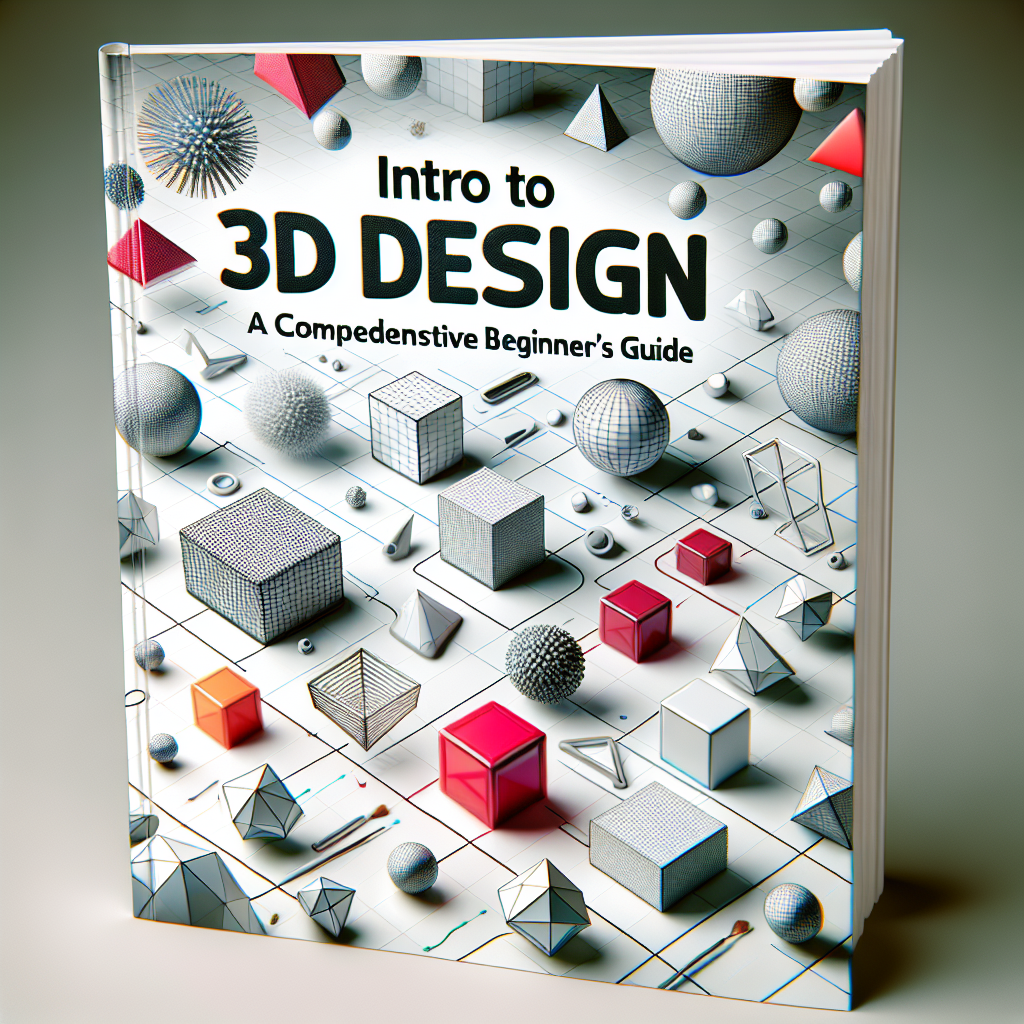What is 3D Design?
3D design refers to the process of creating three-dimensional representations of objects or environments using specialized software. Unlike traditional 2D graphics, 3D modeling brings depth, realism, and perspective, making objects appear more lifelike. This field has revolutionized industries ranging from architecture and engineering to video games and animation.
- 3D Modeling: Building the structure or form of an object.
- Rendering: Producing photorealistic images from 3D models.
- Texturing: Applying surface details and colors.
- Animation: Creating motion and bringing designs to life.
Why Learn 3D Design?
The demand for 3D designers is rapidly increasing in industries such as film, product design, architecture, and gaming. Learning the fundamentals of three-dimensional design opens up creative opportunities and lucrative career paths. For beginners, understanding 3D concepts also nurtures spatial awareness and problem-solving skills.
“3D design transforms imagination into reality, bridging the gap between concept and creation.”
Key Concepts in 3D Design
1. 3D Modeling
At the heart of 3D design lies modeling. This process involves constructing digital objects using vertices, edges, and faces. Popular modeling techniques include polygonal modeling, NURBS, and sculpting. Mastering these techniques is vital for creating detailed and accurate models, whether you’re designing a product prototype or a game character.
2. Texturing and Materials
Texturing adds realism to 3D models by applying images or “maps” to surfaces. Materials define how an object reacts to light, influencing its color, gloss, and transparency. Understanding shaders, bump mapping, and UV mapping is essential for producing lifelike results.
3. Lighting and Rendering
Lighting sets the mood and enhances the realism of a 3D scene. Different light types (ambient, directional, point, spot) can be combined to achieve desired effects. Rendering is the process of generating the final image, balancing quality and speed depending on the project’s requirements.
Popular 3D Design Software
As a beginner, choosing the right software is crucial. Some of the industry-leading 3D design tools include:
- Blender: Free, open-source, and packed with features for modeling, sculpting, texturing, and animation.
- Autodesk Maya: Widely used in film and game production for high-end modeling and animation.
- SketchUp: Ideal for architectural design and easy to learn for newcomers.
- Fusion 360: Focused on product design and engineering, offering cloud-based collaboration.
- 3ds Max: Known for complex modeling and rendering in architecture and games.
Each software has its strengths, but the fundamentals of 3D design remain consistent across platforms.
Applications of 3D Design
| Industry | Use Case |
|---|---|
| Architecture | Designing building models, walkthroughs, and visualizations. |
| Game Development | Creating characters, environments, and assets for interactive experiences. |
| Product Design | Prototyping, visualization, and 3D printing of consumer products. |
| Film & Animation | Creating animated movies, visual effects, and CGI. |
| Medical Visualization | Simulating anatomy, surgical procedures, and research models. |
Essential Steps to Start with 3D Design
- Pick a Software: Start with beginner-friendly options like Blender or SketchUp.
- Learn the Basics: Understand the user interface, navigation, and essential tools.
- Practice Modeling: Recreate simple objects such as cubes, spheres, and furniture to build confidence.
- Explore Texturing: Apply colors, patterns, and materials to your models.
- Experiment with Lighting: See how different lights affect the appearance of your scene.
- Render Your Work: Generate final images and learn how to adjust quality settings.
- Seek Feedback: Share your creations in online communities for constructive critique.
Tips for Effective 3D Design Learning
- Start small—focus on simple projects before tackling complex scenes.
- Regularly watch tutorials and read guides to stay updated with new techniques.
- Join forums and online groups to connect with other 3D artists.
- Don’t be afraid to experiment with different styles and workflows.
- Save your progress often and organize your project files carefully.
- Practice, patience, and persistence are key to mastering 3D design skills.
LSI Keywords and Related Concepts
When discussing intro to 3D design, it’s important to be familiar with related terms and latent semantic indexing (LSI) keywords, such as:
- 3D modeling basics
- Digital sculpting
- Computer-aided design (CAD)
- Rendering techniques
- 3D animation fundamentals
- Mesh topology
- Texturing and UV mapping
- 3D visualization
- Virtual prototyping
- 3D graphics software
Understanding these keywords will not only help in navigating learning resources but also in optimizing your content for search engines and professional discussions.
Conclusion
Embarking on your journey into 3D design can be both exciting and challenging. By building a strong foundation in modeling, texturing, lighting, and rendering, you’ll unlock the ability to create stunning digital art, realistic prototypes, and immersive animations. Remember, every expert was once a beginner—so stay curious, keep experimenting, and enjoy the creative process that 3D design has to offer!
